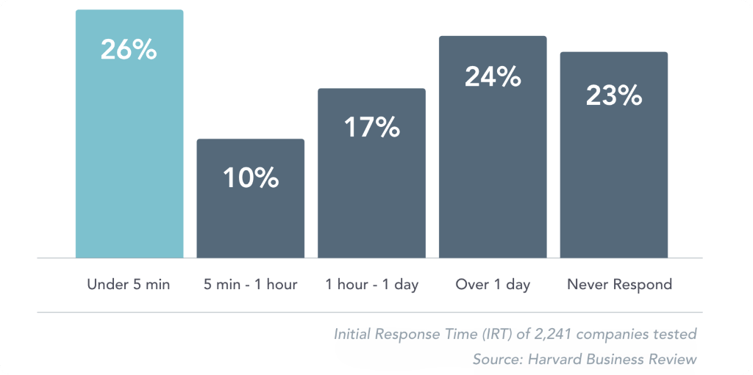With more than 77% of third-party logistics (3PL) warehouses planning to acquire new customers in 2021, it’s more important than ever that you differentiate yourself from your competitors.
To help get you started off in the right direction, I wrote last month about three strategies to grow your 3PL warehouse that you could implement in the upcoming quarter. You’ve started working on those by now, right?
If you recall, one of the strategies we covered included inbound marketing and creating content. We talked about how your prospects are out on the internet looking for answers to their supply chain challenges and one of the best ways to engage with them is to give them a reason to find you by creating content that solves their biggest problems.
But what happens when your prospect finds your content and lands on your website? You only get one chance with first impressions, so hopefully it’s a good one!
In order to ensure that your prospect has a great first impression and will WANT to come back to your website again, here are four website best practices that you should be evaluating or implementing on your website.
1. Stay Visually Consistent
A consistent visual identity can reinforce trust in visitors, so design-wise, you should aim for perfect visual harmony. Create icons and color schemes accordingly, along with quality background imagery. Make the schemes and the design consistent not just with the website, but with the nature of your services too. And don’t forget about who your prospects are! Make sure that your design scheme is relevant and something they would expect.
2. Mobile-friendly design
Every day, more and more people are ditching their desktops or laptops in favor of mobile phones and tablets. This isn't just us saying so either-according to Statista, in the third quarter of 2020, mobile devices (excluding tablets) generated 50.81 percent of global website traffic, consistently hovering around the 50 percent mark since the beginning of 2017.
And this isn’t just some fad. Smartphone conversion on mobile has increased dramatically over the last 4 quarters. The latest quarterly update from 2020 shows, particularly in the United States, there is now only a very small difference between desktop and mobile conversion rates.
If you don't think mobile-friendly for your website, you're probably missing the boat, and providing your prospects with a less than stellar experience.
3. Social Proof
Social proof is based on the idea that people will conform in order to be liked by, similar to, or accepted by the influencer (or society). When building a landing page, you can say all you want about your offer, but how can you prove what you’re saying is true? Authentic testimonials, preferably with a picture of the person, will take care of that for you.
When you’re browsing a landing page and see a testimonial from an industry expert you respect, that’s social proof. When you’re cruising a pricing page and you see that an industry giant is already using the solution, that’s social proof. When you sign up for a consultation because you see the solution solved the exact problem you have for a similar company, that’s social proof.
Essentially, it’s borrowing third-party influence to sway potential customers.
Using testimonials, reviews and more to help prospects understand that others just like them have had success with your company’s fulfillment services is a great way to help overcome objections before your sales team gets them.
4. Easy to Contact
If you have a website, hopefully you’ve made it easy for your potential customers to get in touch with you. Sure, you most likely have a form on a “Contact Us” page they can fill out, but how quickly do you follow up with that?
A widely cited study by the Harvard business process improvement review research team tested the response time of 2,241 B2B sales teams after a prospect completed a lead capture form. The most surprising statistic from the study was that the average time it took a sales team to respond to a B2B lead was 42 hours.

You should make it easy for prospects or customers to reach out to you when and where they want. In another study by LeadResponseManagement.org, you are 100x more likely to connect and 21x more likely to qualify someone if you follow up within five minutes of their outreach, rather than waiting an hour to follow up.
Is your business’ phone number on the website so they can easily call or do they have to go search Google to get that? If you really want to take it to the next level, you could even look at implementing a chat function on your website. Chat today is full of automation and bots that make it more user friendly not only for your prospects but also for your internal team. Visitors can book meetings, get directed to specific pages and more... all with automation.
Along with the three strategies I shared last month, I would highly encourage you to try and take just one of the above recommendations and implement it on your website this quarter. And if you continue to implement one of these each quarter, I guarantee your company will reap the benefits by the end of this year.
Find out what the fastest growing 3PL warehouses are doing to harness opportunities in the new year in the Third Party Logistics Companies Warehouse Benchmark Report.






